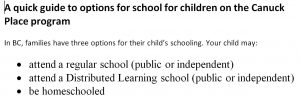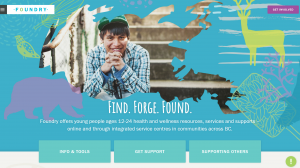






New information:
Q: What happens if my child currently attends a regular school and receives nursing support in school, through NSS, but I want to switch them to a Distributed Learning school? Will they still receive that nursing support?
A: If your child currently receives nursing support at school AND at home, then the nursing support hours from school will be made available to use at home during regular school hours. If your child only receives nursing support in school, and not at home, then the school nursing hours cannot be transferred.


